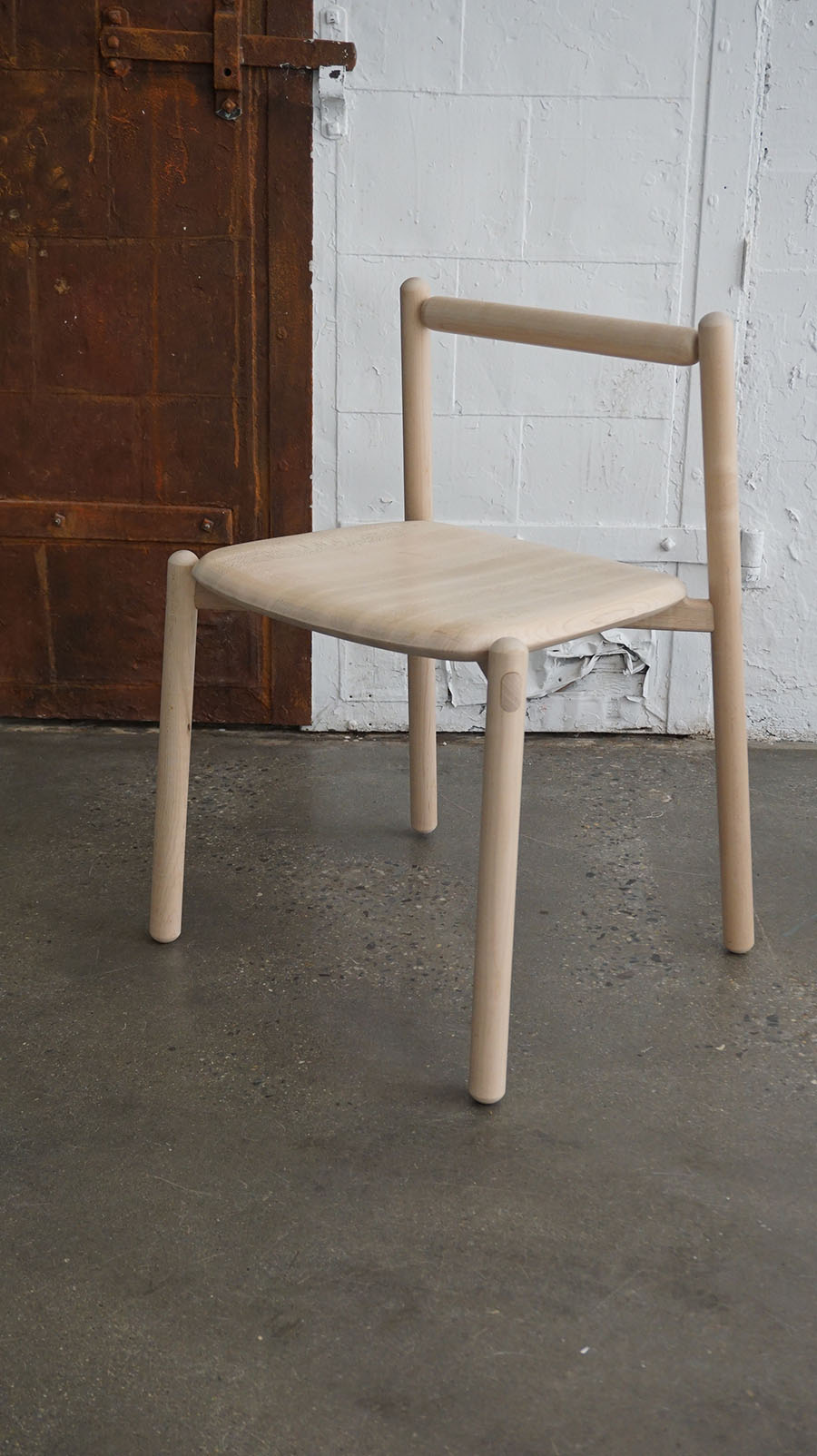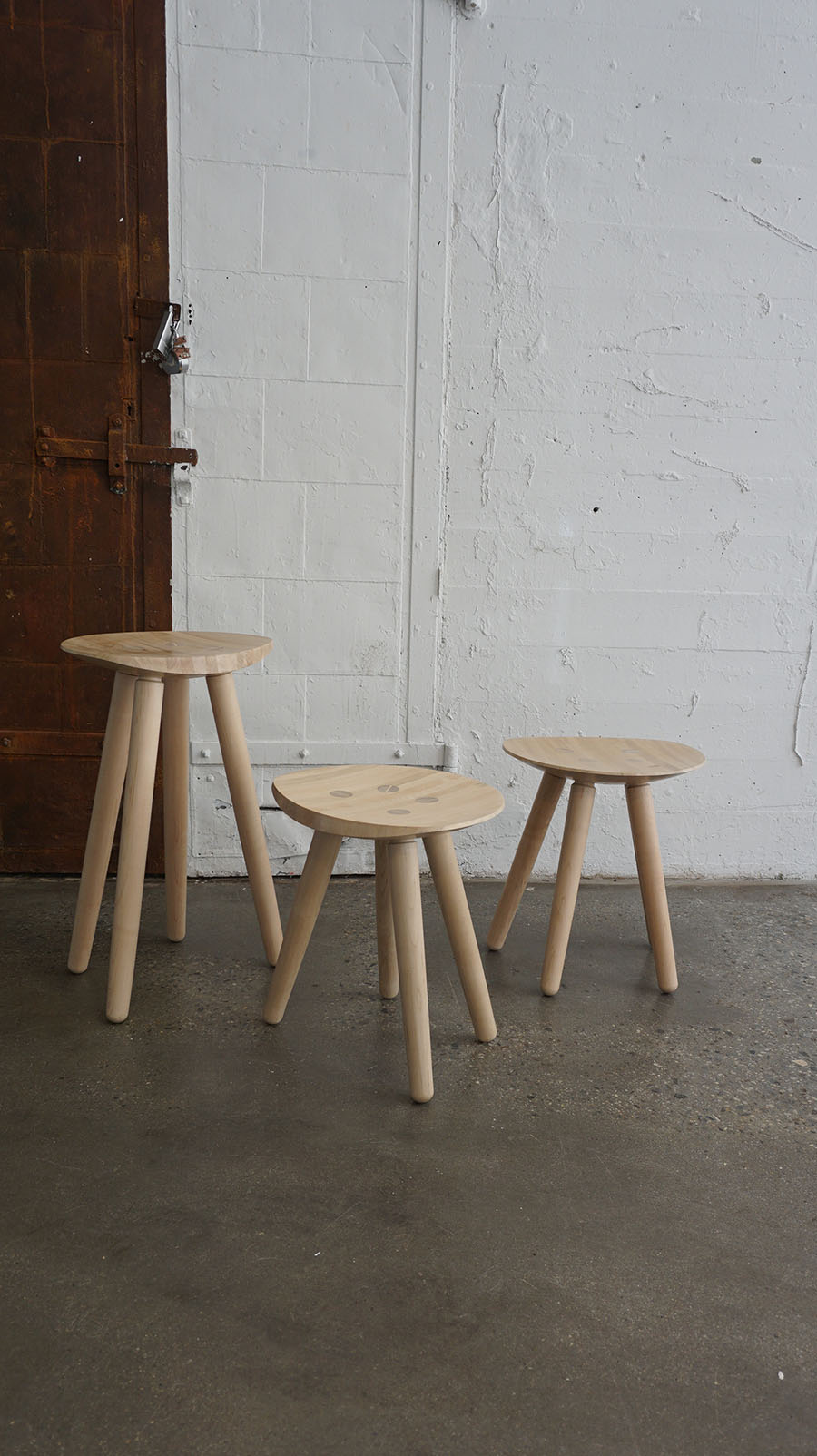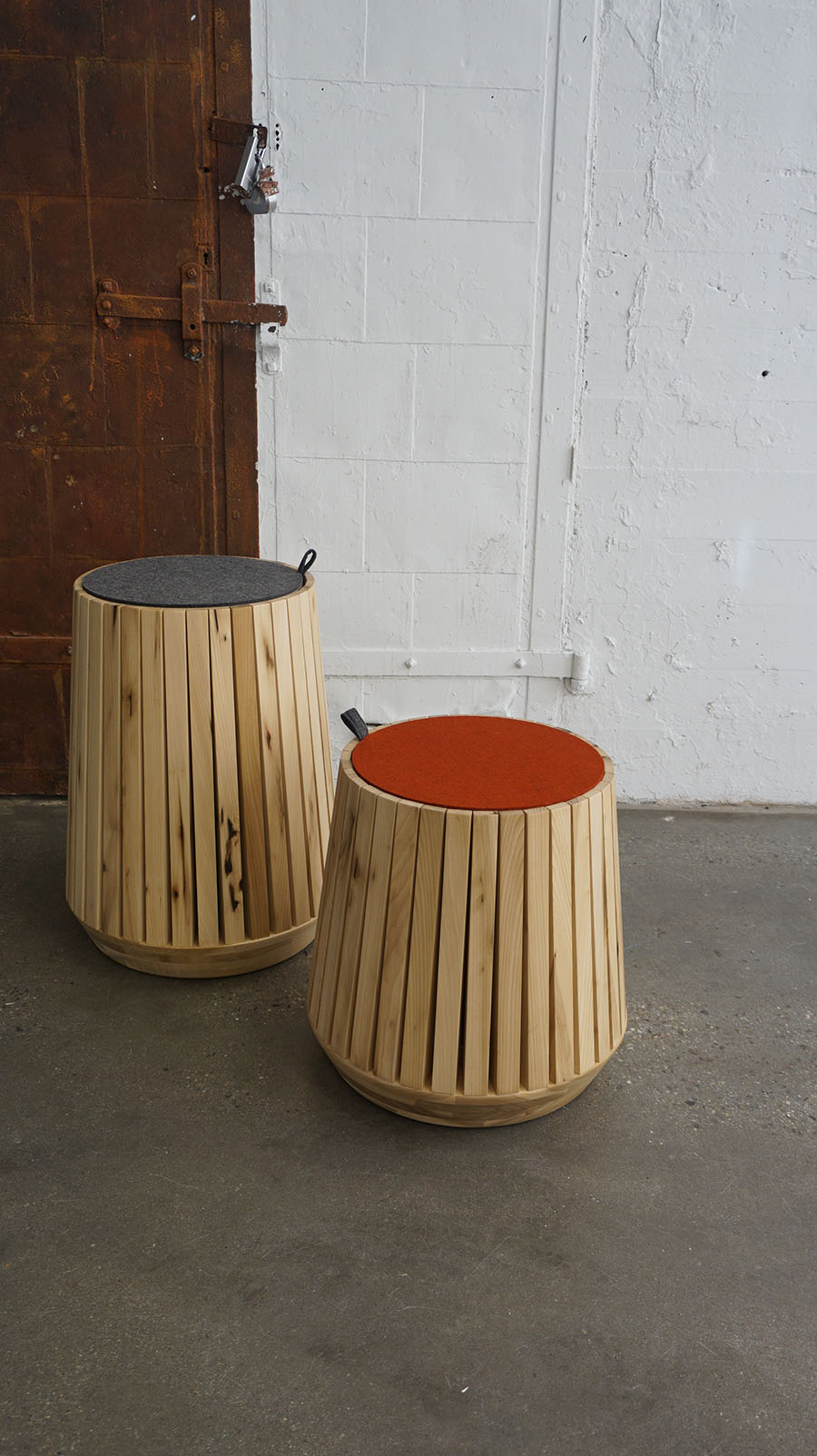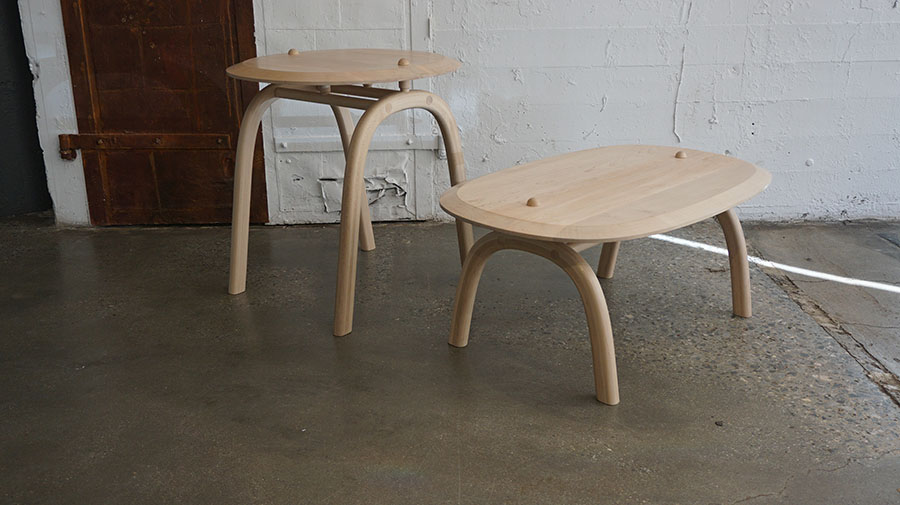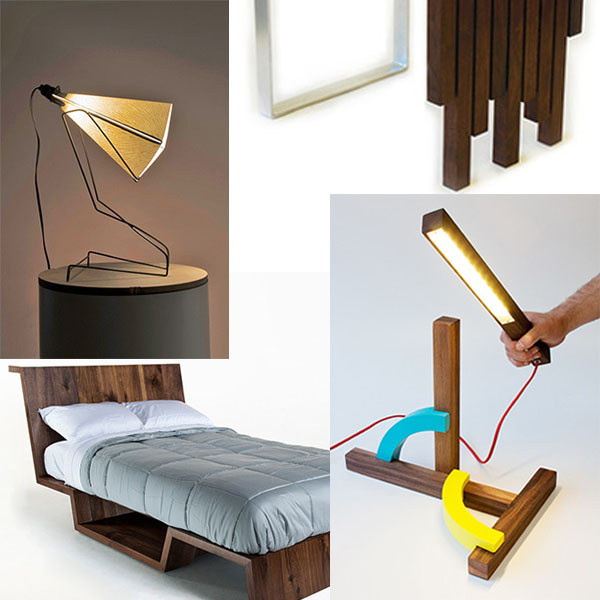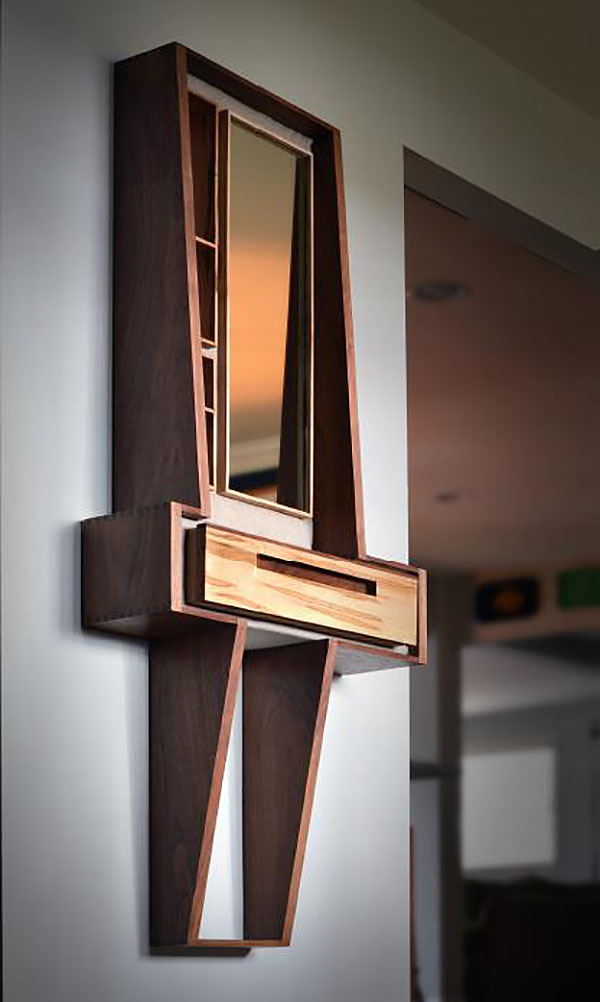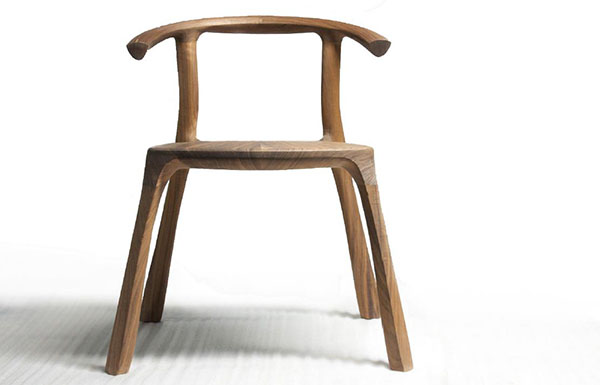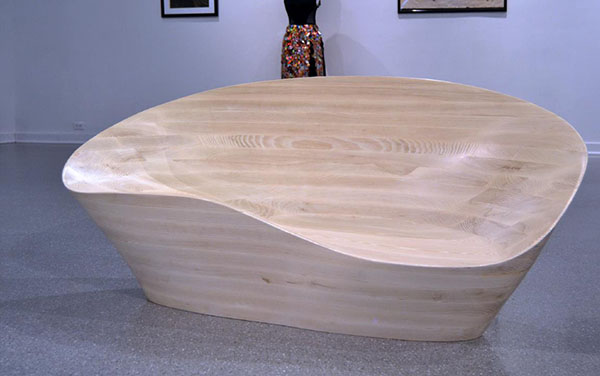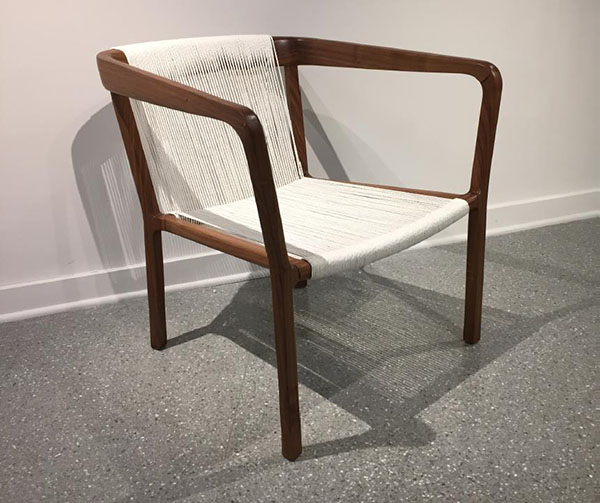BOONE, N.C. — Sustainably harvested lumber. The Japanese philosophy of Ma. Video documentaries. The WantedDesign showcase in New York City.
All converged in an interdisciplinary Conscious Furniture Design project at Appalachian State University, involving the College of Fine and Applied Arts’ departments of Sustainable Development, Applied Design and Communication.
How did the project begin?
A year ago, sustainable development majors thoughtfully harvested and cut lumber from the university’s 350-acre Blackburn Vannoy Farm in Ashe County with help from Ian Snider, Appalachian’s forestry practitioner-in-residence. After months of drying, that lumber became the source of inspiration for four students in a self-directed, senior capstone studio in the Industrial Design (BS) – Furniture program last spring. Those students in the course were:
- Tanner Pittmon ’18, of Cornelius;
- Ben Bridges ’18, of Toccoa, Georgia;
- John Barton ’18, of Atlanta, Georgia; and
- Walter Mingledorff ’18, of Jacksonville, Florida.
In turn, these four students helped sustainable development majors harvest wood to be used in the 2019 studio course.
This video, edited by student Nadine Goetz, tells the story of the Conscious Furniture Design project. Footage shot in spring 2018 by students in the Multimedia Storytelling and Video II classes. Executive Producer: Lynette Holman.
The student team’s process of creating finished furniture was documented by students in the Multimedia Storytelling and Video II courses. From May 17–21, the pieces of furniture were exhibited in the WantedDesign showcase in Brooklyn, New York, after the students’ May graduation.
The concept of sustainable design was an inclusive aspect of the design process and the final product — including all materials, sources and quantities used throughout the project and consideration of the life cycle of the object.
“Too many furniture design programs are putting out students that are competent at only half the design equation. They may be well versed at digital rendering or skilled at building but not in command of both skills,” said Professor Richard Prisco, who led the course.
“At Appalachian, we believe that to be a well-rounded designer you most know the complete process. In this project the students are truly living a design build philosophy that will follow the story of an object of furniture from the tree to the public.”
These four pieces were created by students using the Ma philosophy of furniture design and were selected for exhibition at the WantedDesign showcase held May 17–21, in Brooklyn, New York. Pictured clockwise from top left are the works of Ben Bridges, John Barton, Tanner Pittmon and Walter Mingledorff. Photos submitted
These four pieces were created by students using the Ma philosophy of furniture design and were selected for exhibition at the WantedDesign showcase held May 17–21, in Brooklyn, New York. Pictured top to bottom are the works of Ben Bridges, John Barton, Tanner Pittmon and Walter Mingledorff. Photos submitted
Furniture as art and design
In the videos created by communication majors, the furniture design students describe their work as both art and design.
“I think it’s really important to design furniture with the end-user in mind. That’s the whole purpose — to understand the problem that needs to be solved and deliver that function,” Barton said.
A final design’s brilliance “is defined by its simplicity — the essence of taking something very complicated, stripping that down to its essential value,” Bridges said.
In their work, students applied the Japanese philosophy of Ma, described as the relationship between emptiness and utility. The role of the designer in Ma, according to Prisco, is “to empty out or create a nothingness — a bounded space of interpretation that allows the user to reflect on the introspective unions of space and purpose.”
Ma can mean different things to different people, Pittmon said in his video interview. “I experience time with the piece. Ma is, for me, the tranquil, being hands-on, building the furniture from scratch to the final piece,” he said on camera.
Mingledorff said that Ma is, for him, “encompassing everything in the moment.”
Hear more on the Japanese philosophy of Ma from Appalachian furniture design students.
Video as storytelling
By documenting the studio course, Dr. Lynette Holman said her students learned “how to create an engaging short narrative with natural voices, strong visuals, ambient audio and stories of people who exemplify an issue. They focus on the concept of subjects relaying information in their own voices,” all while applying ethical journalistic decision-making.
“They learn how to organize their efforts as a group to compile a shot list and manage those files so they can be organized and shared with their classmates for the final edits — so while we share all the footage that is shot individually, each student is responsible for their own final edit,” she said.
Holman’s students also built a website using WordPress to feature their final video with an accompanying written story.
Both furniture design and communication students can use their work to help them secure internships and jobs, the faculty members said.
Meghan McCandless contributed to this report.
About the College of Fine and Applied Arts
Appalachian State University’s College of Fine and Applied Arts is a dynamic and innovative group of seven academic departments, bringing together a variety of perspectives, experiences and real-world education to provide unique opportunities for student success. The college has more than 3,500 undergraduate and graduate majors. Its departments are Applied Design, Art, Communication, Military Science and Leadership, Sustainable Development, Sustainable Technology and the Built Environment, and Theatre and Dance. Learn more at https://cfaa.appstate.edu.
About Appalachian State University
As a premier public institution, Appalachian State University prepares students to lead purposeful lives. App State is one of 17 campuses in the University of North Carolina System, with a national reputation for innovative teaching and opening access to a high-quality, cost-effective education. The university enrolls more than 21,000 students, has a low student-to-faculty ratio and offers more than 150 undergraduate and 80 graduate majors at its Boone and Hickory campuses and through App State Online. Learn more at https://www.appstate.edu.
What do you think?
Share your feedback on this story.

